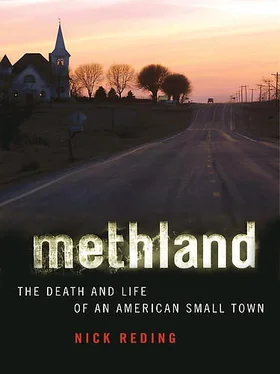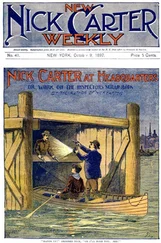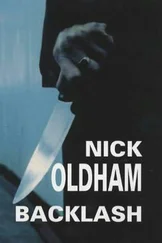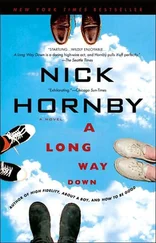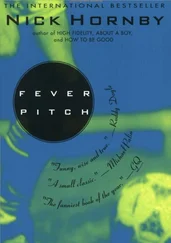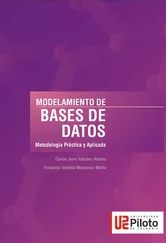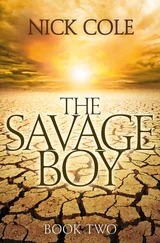McAndrew said such bizarre scenarios were not uncommon back when home-cooked crank still accounted for a quarter or so of the Ottumwa meth market. The real point of the story, though, is that McAndrew sees no difference between the man with the user lab and the traffickers who follow his men. McAndrew isn’t the type to choose his battles or to walk away from a fight. He and his men had handled the local meth market and its users just fine. Now, though, they were confronting something different, and it wasn’t clear McAndrew saw how poorly equipped he might be.
By midnight, McAndrew was nearly done telling his story, pausing every few minutes to look out into the darkness beyond the fire. The pharmacist and the fireman were quiet. In the sullen silence they seemed to be wondering where in the world they were. Not because they were in a cornfield waiting for the SWAT team to attack them, but because they were in Iowa, and it no longer seemed recognizable. When the pharmacist asked what happened to the meth cook, McAndrew’s story ended, in a way, with the man being sentenced to six years, and with him getting out of jail in nine months.
In another way, the story ended like this: with the enormous boom of a concussion grenade, followed immediately by the SWAT team racing in from all directions, weapons raised, wearing full body armor and night-vision goggles, screaming, “Police! Police! Get on your knees!”
Unlike the day’s two previous scenarios, they did not wait for us to shoot first this time.
CHAPTER 13
DISCONNECTED STATES
Thomas P. M. Barnett and Moisés Naím are two post-cold-war thinkers who have come to prominence recently. A reading of their work suggests a framework for understanding the changing manner in which Ottumwa and Oelwein fit into the world—and ultimately, how meth has become such an inherent part of life there. Barnett is a professor and researcher at the U.S. Naval War College. One of the anchors of his worldview, as put forth in his book The Pentagon’s New Map , is the idea that nations can be divided into two types: the “functioning core” and the “non-integrated gap,” or “disconnected” states. The former—the G8, plus Mexico, Brazil, Taiwan, Australia, and other similar industrialized nations—play by one “rule set” predicated on global political and economic integration. The latter—and for Barnett this includes most of the world’s nations—are a collection of rogue states, battered economic and political shell states, dictatorships, and otherwise wayward entities. This non-integrated gap relies on a separate rule set predicated on the black market and the movement of goods and services that are a threat to the stability of the functioning core.
The global drug-trafficking business is by nature disposed to operate outside the bounds of law, politics, and traditional economics. Though, as the meth trade has shown, this doesn’t stop traffickers from functioning in tandem with, or from preying on, government policy and stable financial systems. One might say that the makers and distributors of narcotics function as a disconnected state, which nonetheless exerts tremendous influence within the borders and cultures of nations without regard to whether they’re functioning or disconnected—globalized or marginalized. And just as methamphetamine from the non-integrated gap state of North Korea travels to the core nations of Japan and Australia, so too does pseudoephedrine from the core nation of India get shipped to Mexico (another core nation), where it is made into crank which is sent to the United States (perhaps the core nation). This happens through a loose network of market forces that combine the ideas of connectivity and division deep within the same borders. The state of Michoacán, Mexico, is an example, as are the cities of Nuevo Laredo, Juárez, Nogales, and Matamoros, where even the Mexican army holds no sway.
But what about inside the United States? What about California’s Central Valley; or the so-called Methlehem section of tiny Oelwein, Iowa; or the tinier still town of Benton, Illinois? What about Algona and Lu Verne and Congressman Souder’s poultry-rich Third District of northeastern Indiana? How connected, really, are these places to the rest of the United States, and to the world? In some ways, the link is clear. There is a very good chance, for example, that most of what you ate today came from the Central Valley, whether eggs or beef or dates or oranges or lettuce. The chicken you had last night stands a better-than-average chance of having come from somewhere within a hundred miles of Fort Wayne, Indiana.
In another way, though, many of the towns of the rural United States are quite disconnected from the rest of the nation. Poverty rates are higher, fewer people have achieved secondary levels of education, and substance abuse is far more prevalent than in urban America. It’s worth noting that the reason your dinner moves an average of fifteen hundred miles to get from its source to your plate is because the source—or sources, really—is determined by companies like Tyson and Cargill and ConAgra based on where they can pay the cheapest labor costs. Barnett posits that when one piece is no longer part of the system—that is, when it is disengaged from the standard rules—everyone is vulnerable. Oelwein may look very different from In dependence, but Oelwein’s problems nonetheless affect its neighbor. Oelwein’s vulnerabilities are Iowa’s vulnerabilities, and America’s.
Naím, the editor in chief of Foreign Policy magazine and the former minister of trade and industry of Venezuela, is saying much the same thing as Barnett is in his book Illicit . Rather than a nation, the victim in his paradigm is more likely a car manufacturer in Detroit who suffers from Chinese knockoff parts, or Hollywood taking a hit from the black market DVD trade in the Golden Triangle of Brazil, Paraguay, and Argentina. For Naím, when everything and anything can essentially be stolen before it ends up in the hands of consumers, no one can be truly inoculated from the “system” of chaos. Now, instead of Hollywood DVDs or cars, think of jobs in Oelwein and Ottumwa, Greenville and Gooding. When those towns are in trouble, so too are Scarsdale, New York, and Ladue, Missouri—the second-and fourth-richest cities in the nation, respectively. The proof is in the meth that ends up in New York or St. Louis after stopping at a small, rural transhipment point.
Were Naím or Barnett an epidemiologist, it stands to chance they would gravitate toward the study of RNA viruses, like the flu. The power of the common flu relies in part on what is called antigenic drift , meaning that, as humans develop antibodies to ward off infection, the virus mutates its proteins so that the antibodies can no longer bind to the viral surface. Basically, you make a lock, and the virus makes a key. When the key turns, you get sick. What happens once in a lifetime, on average, is that these same RNA viruses “reassort” themselves. That is the fear with H5N1, commonly referred to as bird flu, which places like the Centers for Disease Control and the World Health Organization are carefully monitoring. The fear is that this particular strain of flu will “figure out” how to adopt (or co-opt) the genetic attributes of the same regular old infection that makes large numbers of people in the world vomit and feel puny for a few days or a week each year. By rearranging, or reassorting, its RNA, H5N1 could theoretically use the common flu to make the jump from chickens and ducks to humans. Once a human falls ill with both flus, the two viruses would be able to replicate in the same cells at the same time, resulting in an antigenic shift . The key to unlock your immunity, if you will, would be passed along with every sneeze and cough on every airplane and in every office around the world in a matter of days or weeks. As a UCLA professor writes in his opening lecture for a class on viral epidemiology, “this is not good!”
Читать дальше
